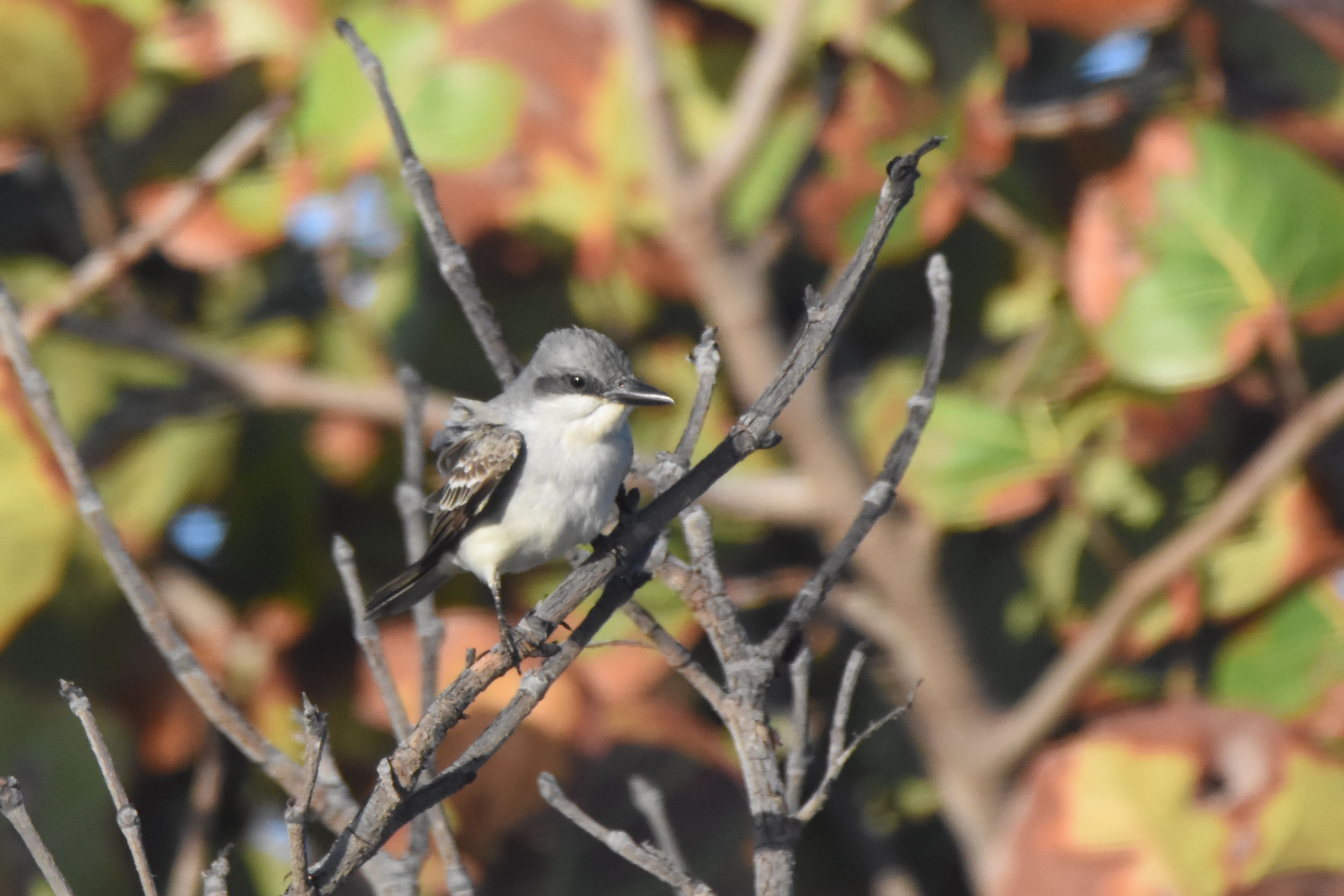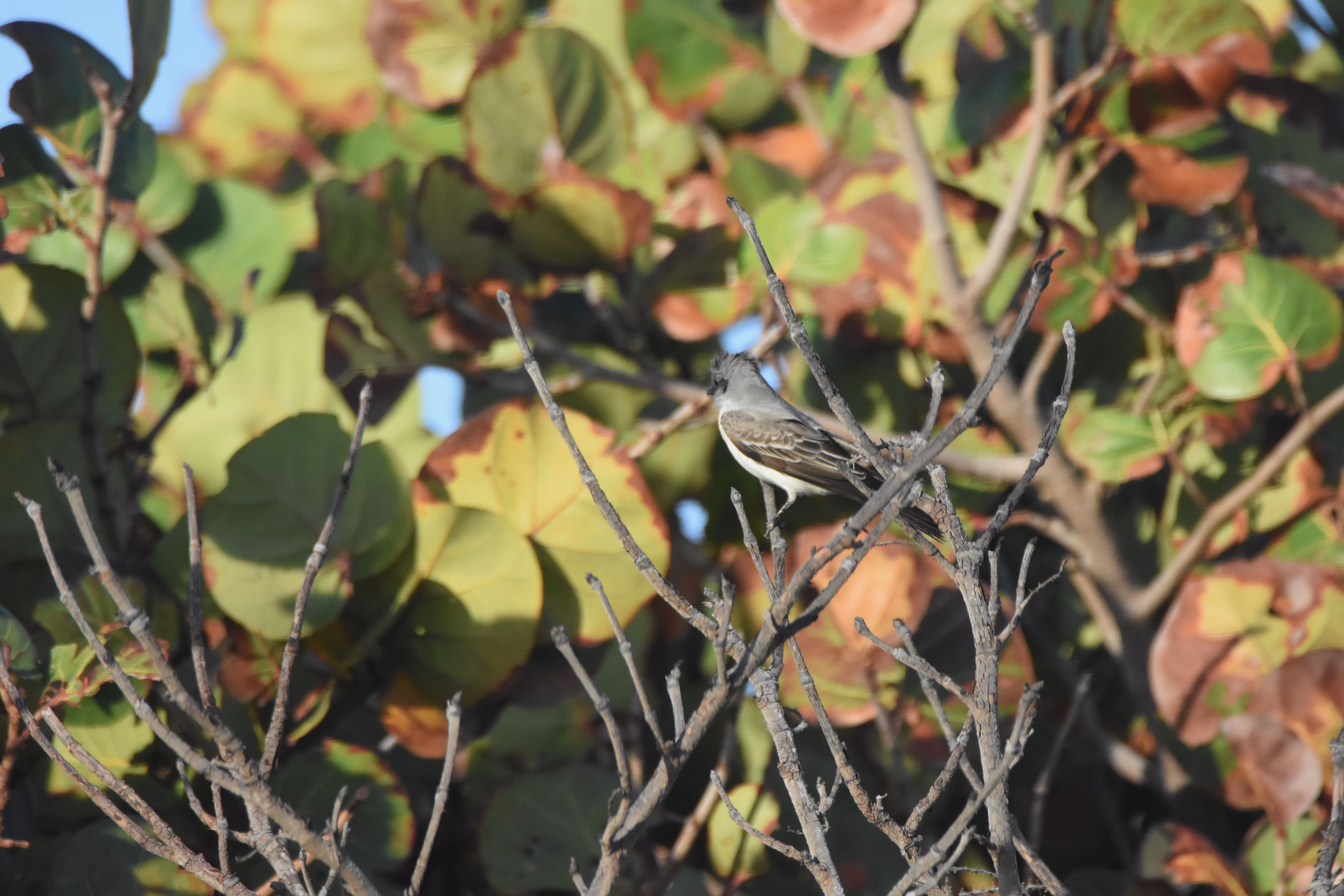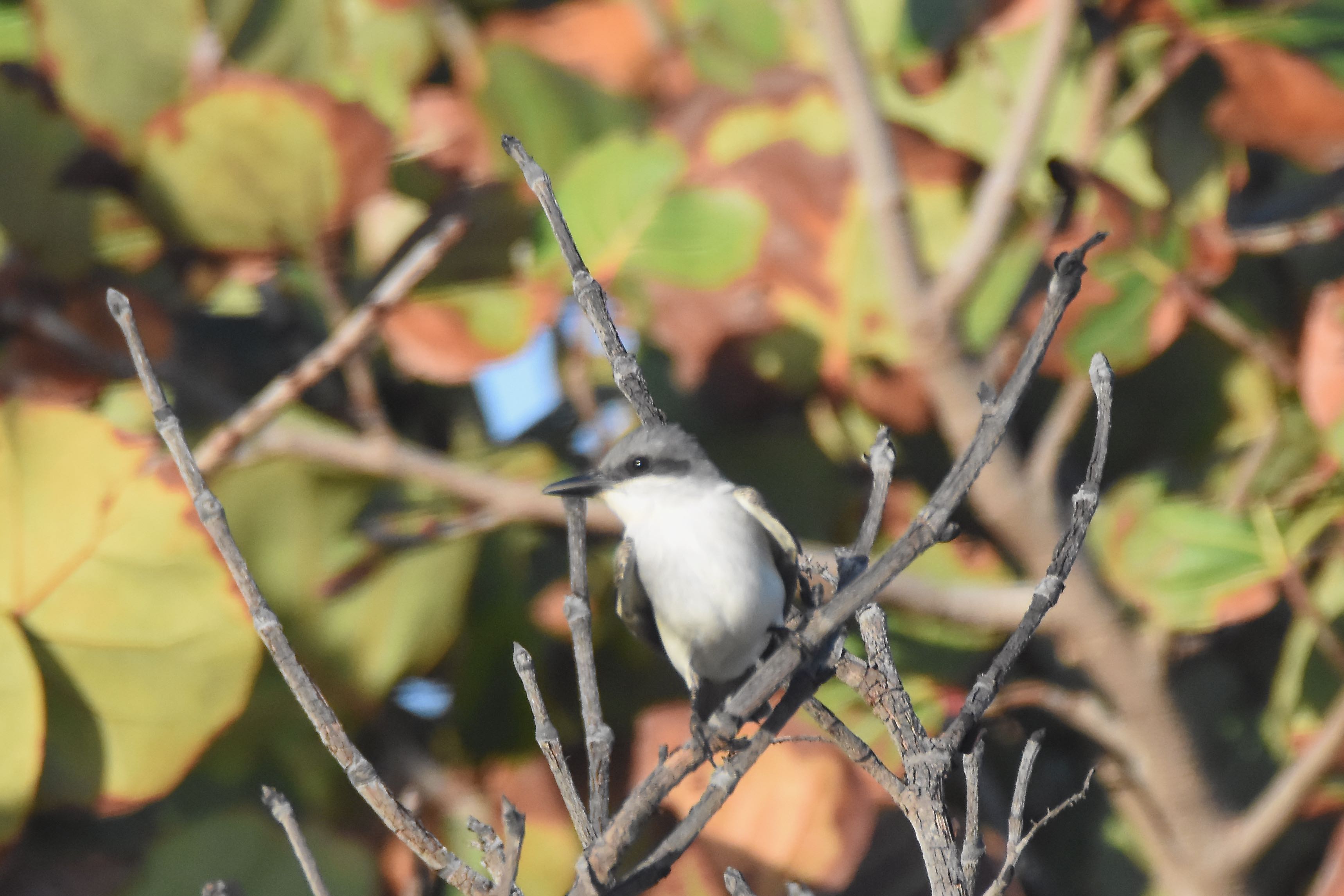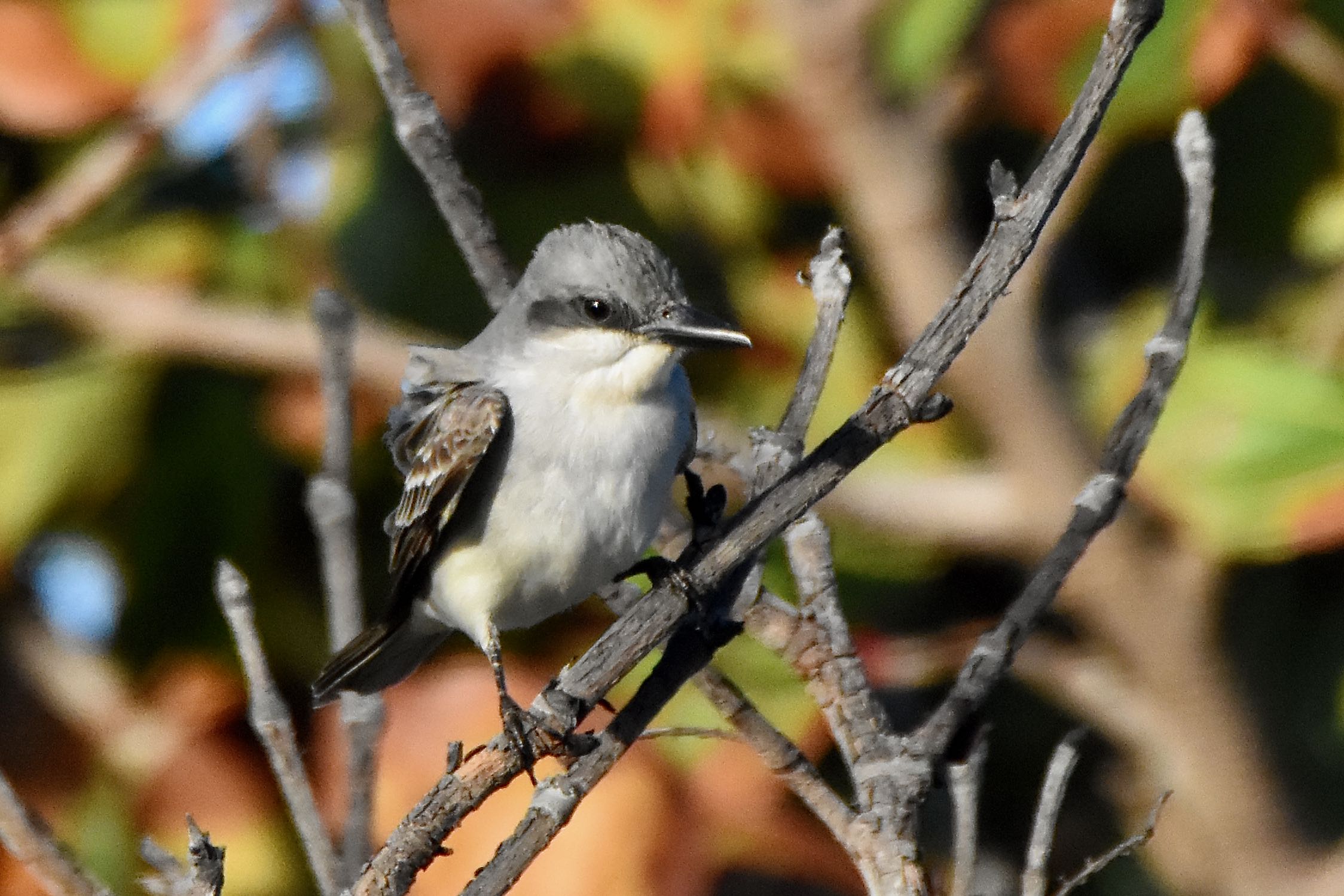
Gray kingbird, photographed at Fort Jefferson, Garden Key, Dry Tortugas National Park, Monroe County, in April 2017.
Gray kingbirds, Tyrannus dominicensis, are a bit of a mystery, which is odd because they're familiar birds, especially for those of us living in the southern half of Florida’s Peninsula.
They're a common sight in coastal areas, particularly in South Florida, but there are basic things about this bird that we just don’t know, like the specific roles parents play in rearing their offspring. Or how old those offspring might be when they first flap their wings with purpose.
Gray kingbirds are migratory visitors to the Sunshine State, wintering in the Caribbean, Central America and South America, then flying north to nest come spring and summer. Their range extends to North Carolina along the Atlantic Coast and as far west as Mississippi on the Gulf, but they really become rare north of roughly Brevard and Hillsborough counties. They’re also known to wander as far north as New York and New England and even as far away as British Columbia.
Gray kingbirds go between seven and eight inches in length. They have large heads sometimes topped with a red crest that’s usually unseen, and a wide, black band across each eye. They’re gray above and on the sides and white underneath. Their tails are slightly forked in the middle.
They tend to perch in open places — an exposed tree branch or electrical wire. They’ll dash out to pick off a wasp, beetle or some other insect, then retreat back to their perch. Gray kingbirds will take lizards and have been seen taking hummingbirds. They also eat some fruit.
Mangrove swamps and off-shore mangrove islands are favorite nesting habitats for gray kingbirds, which explains why they their numbers drop off farther north along the coast and why they’re generally not seen far inland. It may in part account for some of the holes in our knowledge of these birds, since these places aren’t easily accessible for us. Gray kingbirds, however, have been spotted nesting more inland in South Florida within the past few decades, according to the Florida Fish and Wildlife Conservation Commission.
Where mangroves have disappeared, gray kingbirds have adapted their ways to the suburbs, farms and even cities, and they will nest in pines and oaks.
Nesting season begins in June and runs at least into early August. Gray kingbirds make an open cup for nest, where mom will lay two to four eggs per clutch. How long the eggs must be incubated isn’t known, and it’s not known whether one or both parents handle sitting duties. It’s assumed, but not confirmed, that both feed their offspring; how much time passes until first flight is also unknown. What is known: gray kingbirds fiercely defend their nest against invaders, including humans. They return to the Caribbean come October and November.
The gray kingbird population is considered stable.
Gray kingbirds are members of Tyrannidae, the tyrant flycatcher family.
Fort Jefferson, Garden Key, Dry Tortugas National Park



